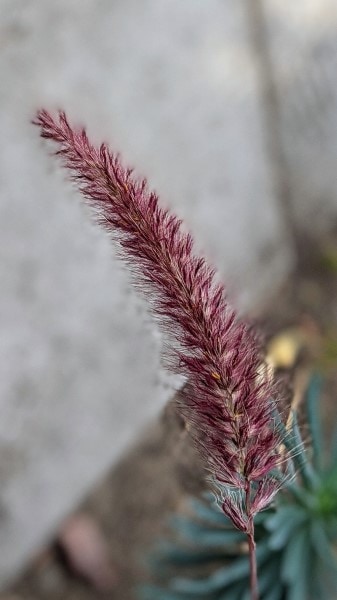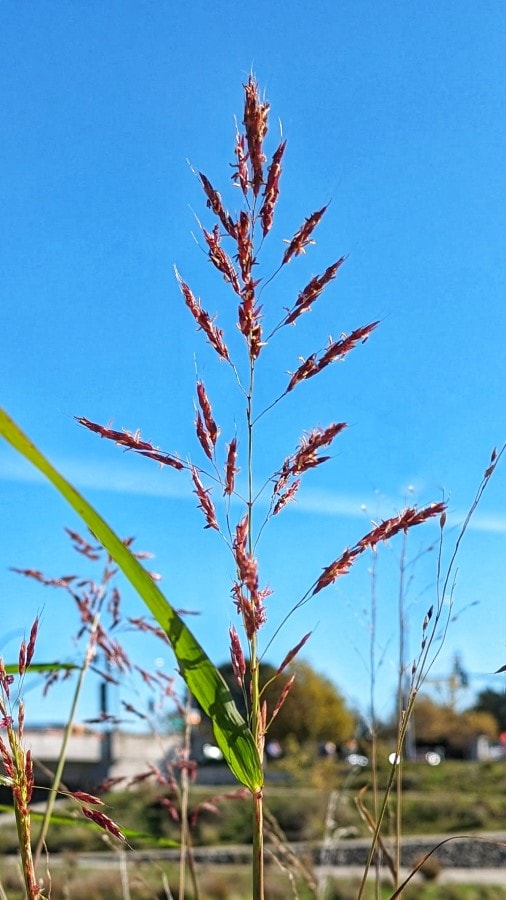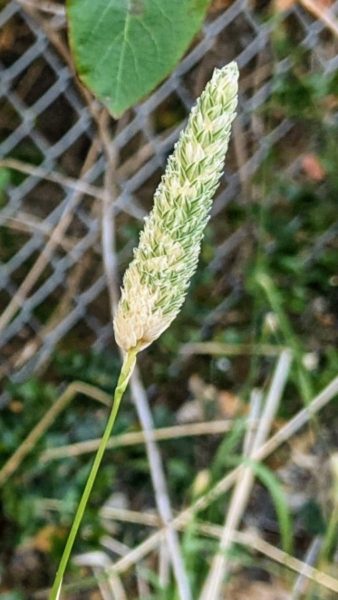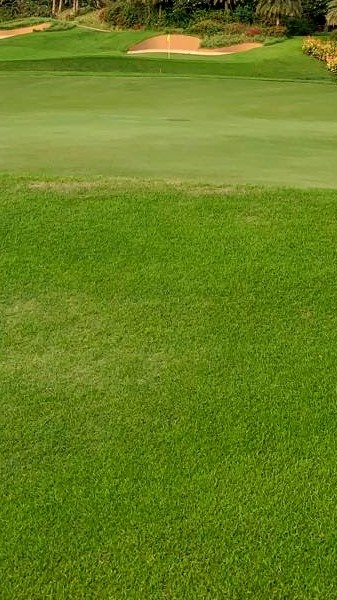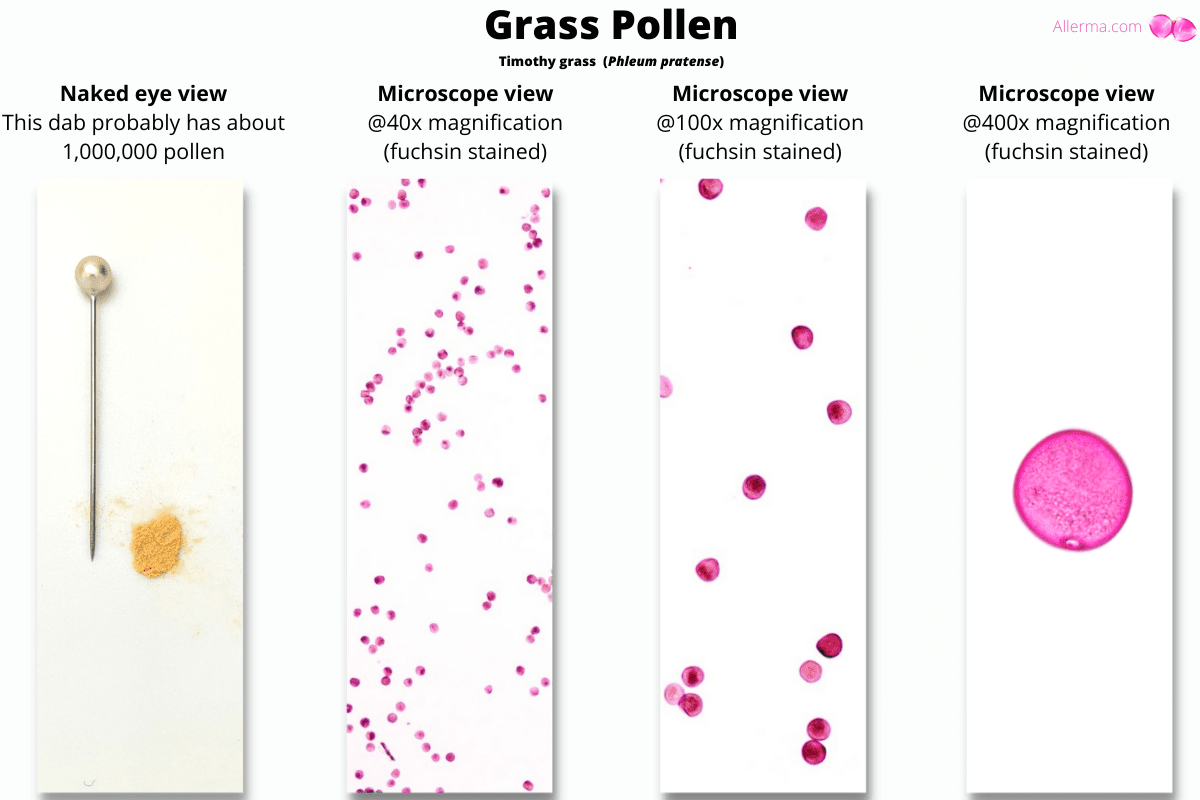What is grass allergy?
Many allergy sufferers misunderstand grass allergies to be a reaction to the soft green swath that adorns their front lawn, or, the one they see in their neighborhood park. But, that is not quite true.
A curated lawn, park, or, sports field that is mowed routinely poses no direct risk of grass pollen allergies. The pollen is only produced by grass that is allowed to grow tall enough to flower. Such grasses generally grow around hiking trails, green belts by highways, wilderness, and agricultural land.
Even though a well-curated turfgrass produces no pollen, it still poses an indirect risk of allergies to some individuals. The risk comes from fungal spores and pollen of other plants that the grass may harbor. We will discuss this a little later.
Pollen comes from grass inflorescence
To understand grass pollen allergies, let’s first get comfortable with the word inflorescence. An inflorescence is a cluster of flowers on a stem. The inflorescence contains several male stamens and female pistils. The anthers on male stamens are responsible for producing and releasing pollen. Conversely, feathery stigmas on female pistils are responsible for catching them to complete the fertilization process. Fertilization is necessary to produce seeds.
Here are some examples of grass inflorescences from four different species of grass:
A grass without inflorescence can not produce pollen. The grass that is allowed to grow tall enough to flower will produce pollen and release it into the air. Compare pictures A and B
What does grass pollen look like?
Grass pollen is a yellow powdery substance that is released by grass flowers. More specifically, it is released by anthers of the male stamen within the grass inflorescence.
Although we may be able to see the yellow dust of pollen with our naked eyes when thousands of grains are together in one place, when dispersed in the air though, pollen grains are invisible.
To give you some context of grass pollen size, here are some pictures of Timothy grass pollen from my lab.
The pollen of all grass species has extremely similar characteristics. So much so, that the pollen counters who do air surveys do not categorize grass pollen at the species level. All species captured by air sampler are counted as “grass” and reported as one because they all look very similar under the microscope.
Pollen shape and size
The grass pollen for all species are round in shape, have a single pore, contain granular cytoplasm, and have an unremarkable outer surface. (see 400x magnification picture above)
The only visual variations between pollen of different species are the size and the degree of roundness. Unfortunately, levels of hydration and the quality of pollen development both affect the size and shape of pollen. Thus, these two characteristics are not reliable for categorizing pollen by species. Besides, many species produce pollen within the same size range.
The pollen of all grasses are generally 25 to 65 micrometers, with the notable exception of Zea may (corn), which is approximately 115 micrometers. [1]
How does grass pollen spread?
Pollen does not have any mobility or navigation ability of its own. It is entirely at the mercy of insects or wind to carry it to its female counterpart, which could be less than a millimeter away, or, many miles away.
Grasses do not interest bees and other insects because their flowers lack color and fragrance to attract them. Nor do grasses offer any nectar to pollinating insects. Instead, the grass pollen relies on wind for its transportation. Once the pollen is released into the air, it can float miles away from the source in hopes of settling down on a compatible female stigma.
Most pollen that becomes airborne fails to reach their desired destination of a compatible female mate. In their random journey for a suitable match, almost all end up in the soil, water, or our breath.
Consequently, one could live in the middle of a concrete jungle like New York City and still get exposed to grass pollen that the wind brings from the surrounding green belts.
When we think of grass, our mind conjures up lush gardens, parks, or golf courses. But, grasses are much more than that. For example, rice, wheat, barley, oat, rye, and corn, our primary sources of food, are all different types of grasses.
Even bamboo, which can grow to be 100 feet tall, is a species of grass.
All in all, there are 12,000 species of grass worldwide.
However, when it comes to the capacity of releasing large amounts of pollen in the air, not all grasses are created equal.
The self-pollinating and cross-pollinating grasses
Some grasses like wheat and barley self-pollinate, meaning, the plant structure supports inbreeding and male pollen can mate with female ovules within the same flower. Such plants do not have to produce large quantities of pollen. Nor do they have a need to get their pollen airborne. However, a small amount of pollen could still leak into the air, if disturbed by strong winds or farming activities.
In contrast, cross-pollinating plants, such as Bermuda grass, have mechanisms in place to prevent inbreeding. For example, the male stamens and female pistils on the same plant do not mature at the same time, which prevents self-pollination. Thus, these plants are structured to release a larger amount of pollen into the air to ensure at least some of it reaches their compatible female counterparts of the same species.
So, it is natural then to assume that most of the grass pollen that urban and suburban populations breathe in during summer is mostly of cross-pollinating grasses.
What are the symptoms of grass allergies?
The common grass pollen allergy symptoms are:
- Itching in eyes, roof of the mouth, and/or throat.
- Runny nose (rhinitis).
- Sneezing.
- Stuffy nose and/or sinus pressure.
- Itchy skin and rashes.
- Wheezing and coughing (in case of Asthma).
Can routinely mowed grass cause allergies?
As we discussed earlier, routinely mowed grass does not grow tall enough to flower. Hence, it is incapable of producing pollen of its own. This obviously takes away the direct threat of any pollen from the grass. However, well-curated turfgrass may still pose some indirect risks.
The first indirect risk comes from the pollen of all other allergenic plants in your neighborhood. Billions of airborne pollen from nearby wind-pollinated trees, weeds, and grass eventually have to settle down due to gravity. And some of it undoubtedly will settle down in your lawn and remain there trapped in the grass. So, when the lawn is disturbed, this collected pollen may become loose and get airborne.
The second indirect risk comes from the spores of fungi that grow in the soil under turfgrass. When disturbed, these fungal spores become airborne and can cause an allergic reaction. This, of course, is only relevant if you are allergic to fungal spores as well.
So, while a well-curated lawn does not produce grass pollen, it does store pollen and spores of other seasonal allergens.
What are the best ways to avoid grass pollen?
First and foremost, you have to learn the time and duration of grass pollen season in your region. If you live in San Francisco Bay Area, you can check our pollen count reports. For other regions, AAAAI.org provides reliable pollen counts.
During the pollen season, take the following steps:
- If you have a lawn, mow it regularly to make sure grass does not flower. It would be better though to have someone else do the mowing for you.
- Do not grow tall ornamental grasses in your garden, even if they are self-pollinating types. It’s better to be safe than sorry.
- During the grass pollen season, avoid going into outdoors where grass grows tall and has visible inflorescence.
- Run a HEPA filter purifier in your home to capture airborne pollen that enters your home from doors and windows.
- Inspite of an air purifier, some pollen will settle down on floors and other surfaces of your home. Have someone vacuum clean and wipe clean your home routinely to remove pollen. Use HEPA vacuum cleaners only, otherwise, the equipment will discharge pollen back into the air.
- Launder your beddings regularly to remove any pollen settled on your bed. This will reduce risk of any nighly exposure.
- When you return home from outdoors, you could potentially bring pollen in your clothers and body (e.g. hair). Take a shower upon return and change into fresh clothes. This step obviously requires some judgement at individual level. For example, sometimes, a 30 minutes nature walk can expose you to more pollen than spending an entire day in a city filled with skyscrapers.
When is the grass pollen season?
The pollen season in each region can be four to six months long. The grass pollen season generally peaks in summer everywhere, but the spring and fall counts are dependent on the local climate and the grass species it supports.
Generally, each species of grass pollinates for four to six weeks. However, each region could possibly have dozens of different species of grass, which bloom on a staggard schedule. This is why the overall grass season persists for several months.
In the San Francisco Bay area, we start seeing low counts of grass pollen as early as March 20th. The season reaches its peak towards the end of May and then the pollen starts to fade away in June. We do see some errant and sporadic grass pollen in July as well. So in essence we get a four-month-long grass pollen season in the Bay Area.
The warmer climates of Texas see grass pollen all the way through October and so do many other southern and midwestern states. For most of the East Coast, grass pollinates during summer and fall.
Key Takeaways
- Only grass, which grows tall enough to flower can release pollen.
- Some grasses are self-pollinating and do not release large quantities of pollen. The species like Bermuda that are cross-pollinating are the primary source of allergies.
- The peak season for grass pollen is summer. But, depending on the local climate, some species bloom in spring as well as fall.
- The small microscopic pollen travels via wind and can spread many miles away from the source.
References
- Sampling and indentifying pollens and Molds by E. Grant Smith



